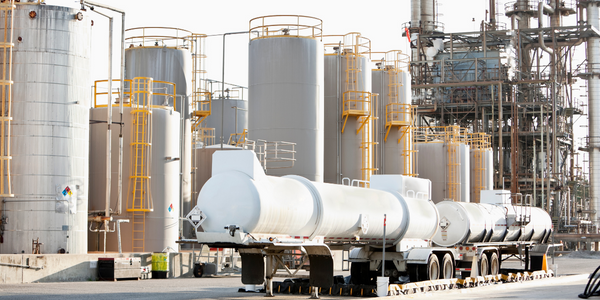公司规模
Large Corporate
地区
- Europe
国家
- Denmark
产品
- JDA Advanced Store Replenishment
- JDA Advanced Warehouse Replenishment
技术栈
- ERP system
实施规模
- Enterprise-wide Deployment
影响指标
- Customer Satisfaction
- Cost Savings
- Productivity Improvements
技术
- 功能应用 - 库存管理系统
- 功能应用 - 仓库管理系统 (WMS)
适用行业
- 药品
适用功能
- 仓库和库存管理
- 物流运输
用例
- 库存管理
- 供应链可见性(SCV)
服务
- 系统集成
关于客户
Nomeco A/S 是丹麦最大的药品批发商,市场份额达 70%。Nomeco 专注于健康物流,是丹麦制药行业的国际卓越中心,也是芬兰公司 Tamro 的全资子公司的一部分,该公司是北欧、波兰和波罗的海国家最大的药品分销商。Nomeco 拥有五个分销设施,为丹麦各地的 200 多家药店提供服务。在选择 JDA 之前,Nomeco 每周都会使用其 ERP 系统创建供应商订单。这些订单基于历史数据和团队对其药店客户需求的最佳估计。
挑战
丹麦的药品供应商和零售商在极其复杂的环境中运营。每两周供应商必须向政府提交产品定价,但他们对竞争对手的类似药品定价一无所知。然后,政府从投标中选出价格最低的处方药,这是政府在给定的两周内唯一可以全额报销的处方药。两周后,整个过程又重新开始。在竞争激烈的市场中表现出色的一家公司是 Nomeco A/S,它是丹麦最大的药品批发商,拥有 70% 的市场份额。Nomeco 专注于医疗物流,是丹麦制药行业的国际卓越中心,也是芬兰公司 Tamro 的全资子公司的一部分,该公司是北欧、波兰和波罗的海国家最大的药品分销商。
解决方案
为了更好地了解和控制这一充满挑战的商业环境,该公司采用了 JDA Advanced Warehouse Replenishment 和 JDA Advanced Store Replenishment 软件。这些解决方案使批发商能够实施创新的 VMI 计划,该计划可轻松集成到其现有 ERP 系统以及所有药房客户的系统中。借助 JDA 的解决方案,Nomeco 能够在定价系统变更前一周获取政府提供的定价代码信息,并将该数据输入其 ERP 系统。批发商使用 JDA Advanced Warehouse Replenishment 为其药品制造商供应商的产品创建采购订单 (PO)。JDA Advanced Store Replenishment 为 Nomeco 和参与批发商 VMI 计划的公司药房客户提供实时洞察。Nomeco 还获取了药房库存数据,然后可以将其与其 ERP 系统同步,从而使公司能够创建更准确的 PO。
运营影响
数量效益

Case Study missing?
Start adding your own!
Register with your work email and create a new case study profile for your business.
相关案例.

Case Study
Case Study: Pfizer
Pfizer’s high-performance computing software and systems for worldwide research and development support large-scale data analysis, research projects, clinical analytics, and modeling. Pfizer’s computing services are used across the spectrum of research and development efforts, from the deep biological understanding of disease to the design of safe, efficacious therapeutic agents.

Case Study
Fusion Middleware Integration on Cloud for Pharma Major
Customer wanted a real-time, seamless, cloud based integration between the existing on premise and cloud based application using SOA technology on Oracle Fusion Middleware Platform, a Contingent Worker Solution to collect, track, manage and report information for on-boarding, maintenance and off-boarding of contingent workers using a streamlined and Integrated business process, and streamlining of integration to the back-end systems and multiple SaaS applications.

Case Study
Process Control System Support
In many automated production facilities, changes are made to SIMATIC PCS 7 projects on a daily basis, with individual processes often optimised by multiple workers due to shift changes. Documentation is key here, as this keeps workers informed about why a change was made. Furthermore, SIMATIC PCS 7 installations are generally used in locations where documentation is required for audits and certification. The ability to track changes between two software projects is not only an invaluable aid during shift changes, but also when searching for errors or optimising a PCS 7 installation. Every change made to the system is labour-intensive and time-consuming. Moreover, there is also the risk that errors may occur. If a change is saved in the project, then the old version is lost unless a backup copy was created in advance. If no backup was created, it will no longer be possible to return to the previous state if and when programming errors occur. Each backup denotes a version used by the SIMATIC PCS 7 system to operate an installation. To correctly interpret a version, information is required on WHO changed WHAT, WHERE, WHEN and WHY: - Who created the version/who is responsible for the version? - Who released the version? - What was changed in the version i.e. in which block or module of the SIMATIC PCS 7 installation were the changes made? - When was the version created? Is this the latest version or is there a more recent version? - Why were the changes made to the version? If they are part of a regular maintenance cycle, then is the aim to fix an error or to improve production processes? - Is this particular version also the version currently being used in production? The fact that SIMATIC PCS 7 projects use extremely large quantities of data complicates the situation even further, and it can take a long time to load and save information as a result. Without a sustainable strategy for operating a SIMATIC PCS 7 installation, searching for the right software version can become extremely time-consuming and the installation may run inefficiently as a result.

Case Study
ELI LILLY ADOPTS MICROMEDIA’S ALERT NOTIFICATION SYSTEM
Pharmaceutical production is subject to a strict set of enforced rules that must be adhered to and compliance to these standards is critically necessary. Due to the efforts of WIN 911’s strategic partner Micromedia, Lilly was able to adopt an alarm notification infrastructure that integrated smoothly with their existing workflows and emergency hardware and protocols. These raw energy sources enable the industrial process to function: electricity, WIN-911 Software | 4020 South Industrial Drive, Suite 120 | Austin, TX 78744 USA industrial steam, iced water, air mixtures of varying quality. Refrigeration towers, boilers and wastewater are monitored by ALERT. Eli Lilly identified 15000 potential variables, but limitations compelled them to chisel the variable list down to 300. This allowed all major alarms to be covered including pressure, discharge, quantity of waste water discharged,temperature, carbon dioxide content, oxygen & sulphur content, and the water’s pH.









